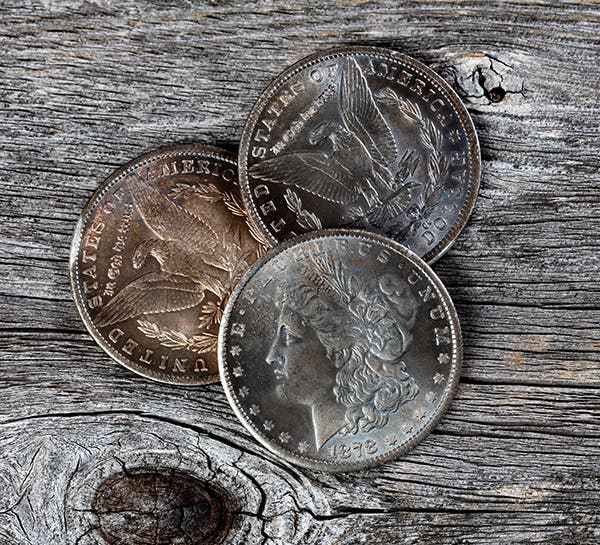Two types for 1917-S Standing Liberty quarter
There are two 1917-S Standing Liberty quarters, and it’s safe to say that both are interesting coins. They are also relatively available coins when you consider their mintages. That is…
There are two 1917-S Standing Liberty quarters, and it’s safe to say that both are interesting coins. They are also relatively available coins when you consider their mintages. That is probably because unlike later dates, some of each may have been saved due to their being just the second year of this design.
There was no 1916-S Standing Liberty quarter; in fact, there was barely a 1916 Standing Liberty quarter at all. Three new coin designs were produced in 1916, and all were different. When designs of the dime, quarter and half dollar had been changed, in 1892 they were changed to the same thing.
In 1916 the Mint got around to the Standing Liberty quarter last. It was finally ready for production in late December, and there was only enough time for a very modest 52,000-piece mintage in Philadelphia.
San Francisco and Denver began striking Standing Liberty quarters in 1917, with San Francisco producing 1,952,000 before production was halted for a design modification that saw Liberty’s left breast covered and three stars added below the eagle on the reverse.
Over the years, there has been a lot of discussion about those 1917 modifications. Some claim that the changes were not legal as the law said designs could not be changed without the consent of Congress if they had not been in use for 25 years.
It was apparently the stance of officials that the designs were simply refined or modified rather than changed, as there were also tweaks (though less obvious) to the Walking Liberty half. The covering of Liberty’s exposed breast, however, has produced a lot of speculation. No proof has ever been offered of an outcry over Liberty with a bare breast.
In any case, with the changes made, production resumed with the new Type 2 Standing Liberty 1917-S having a mintage of 5,522,000. Just how much the public noticed the changes is an interesting question. There was not much quarter collecting, even less quarter collecting by date and mint, and still less collecting where different types were concerned. Since major Buffalo nickel errors of the period were not discovered for decades, we have to question how many would have noticed or cared about the slight modifications to the new quarters.
What we do know is that the two types are fairly close in price. Currently, the Type I 1917-S lists for $22 in G-4 condition, $300 in MS-60, $1,000 in MS-65 and $3,200 in MS-65 with a full head. The higher-mintage Type 2 1917-S is at $29 in G-4, $225 in MS-60, $950 in MS-65 and $3,650 in MS-65 with a full head.
The key to these prices for coins with very different mintages can be found in the supply. The Numismatic Guaranty Corporation reports 36 examples of the Type I in MS-65 or better without full head and 181 in MS-65 or better with a full head. The Professional Coin Grading Service has seen 63 examples of the Type I in MS-65 or better without full head and 304 in MS-65 or better with a full head.
For Type 2 examples, NGC reports 70 examples in MS-65 or better without full head and 40 in MS-65 or better with a full head. The PCGS totals are 110 examples in MS-65 or better without full head and 94 in MS-65 or better with a full head.
Simply put, available supplies support what is seemingly unusual pricing. Another factor is that greater care may have been taken in the production of the Type 1, as the Type 2 was a mid-year replacement and probably produced under rushed conditions. We cannot know for sure, but we can be certain that the two 1917-S Standing Liberty quarters make a very interesting pair.
This article was originally printed in Numismatic News. >> Subscribe today.
More Collecting Resources
• The Standard Catalog of World Coins, 1901-2000 is your guide to images, prices and information on coinage of the 1900s.
• Any coin collector can tell you that a close look is necessary for accurate grading. Check out this USB microscope today!








